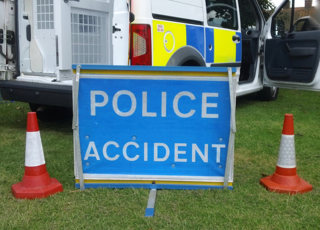There were 125 people killed on London’s roads in 2019 - a 12% increase on the 112 killed the previous year - according to new data published by Transport for London (TfL).
In 2019, 68 people were killed while walking on London’s roads, up from 57 in 2018, accounting for 54% of all fatalities. Of these, 44 were as a result of a collision with a car. Five people died while cycling, down from 12 in 2018, and 31 motorcyclists were killed, up from 22 in 2018; 3,780 people were also seriously injured.
Heidi Alexander, deputy mayor for transport, said: “It is not acceptable that anyone should be killed or seriously injured when travelling in the capital, and these sobering statistics highlight the vital importance of our work to protect those using London’s roads.
“Tough new regulations like the Direct Vision Standard, alongside measures making it easier for Londoners to walk and cycle around London, will make a huge difference in improving safety and preventing any more devastating incidents on our roads.”
There were 25,341 reported collisions in London in 2019. People walking, cycling and motorcycling made up 83% of all people killed or seriously injured last year.
TfL says that this highlights the need for urgent lifesaving measures including segregated cycle lanes, 20mph speed limits, Low Traffic Neighbourhoods, the removal of lorry blind spots and improved motorcycle training, which all aim to protect the most vulnerable on the capital’s streets.
Overall, TfL argues that 2019 shows a continuing decline in the number of people killed or seriously injured on London’s roads compared to the 2005-09 baseline, helping it towards its Vision Zero goal.
However, the rate of the decline has slowed in recent years, and TfL has today (Wednesday, September 30) set out how it aims to reduce the number of fatalaties.
A Met police review of fatal collision investigations for 2019 showed that around half of these had speed as a contributing factor to the collision.
TfL says it will bring in a 20mph speed limit on over 20km of roads as part of the Streetspace plan to make walking and cycling safer.
Following the launch of a 20mph speed limit within the Congestion Charging Zone in March, the same limit has recently been introduced on Edgware Road, Park Lane and Hampstead Road.
The latest statistics show that 28 people riding motorcycles have died so far in 2020, representing a 27% rise compared with 22 deaths by the same period last year.
TfL says that drivers are being urged to look out for motorcyclists. It is also offering free online, face-to-face and socially distancing motorcycle and scooter training courses.
TfL has also confirmed that the Direct Vision Standard will be enforced from March 1, 2021.
Introduced with the support of London Councils, it is set to reduce lethal blind spots by introducing a permit system for heavy goods vehicles (HGVs), assigning vehicles a star rating based on how much the driver can see directly through their cab window.
HGVs with a zero-star rating will be required to fit additional vehicle safety features.
Lilli Matson, chief safety, health and environment officer at TfL, said: “Introducing the Direct Vision Standard – the first standard in the world to reduce lethal blind spots from HGVs – combined with our wider work to reduce road danger will prevent more families, friends and communities from experiencing the devastation of road trauma.”
Since May, TfL’s Streetspace programme has led to more than 50 miles of new or upgraded cycle infrastructure being built or currently under construction, along with more than 22,500 square metres of extra pavement space on the TfL network.
Furthermore, since March, 74 Low Traffic Neighbourhoods (LTNs) have been introduced across London to reduce motor traffic on local roads.
With LTN schemes, TfL and London’s boroughs say they are delivering safe and attractive streets for walking and cycling by preventing through traffic from using residential neighbourhood roads (often known as ‘rat running’), while maintaining essential access.





















Login to comment
Comments
No comments have been made yet.